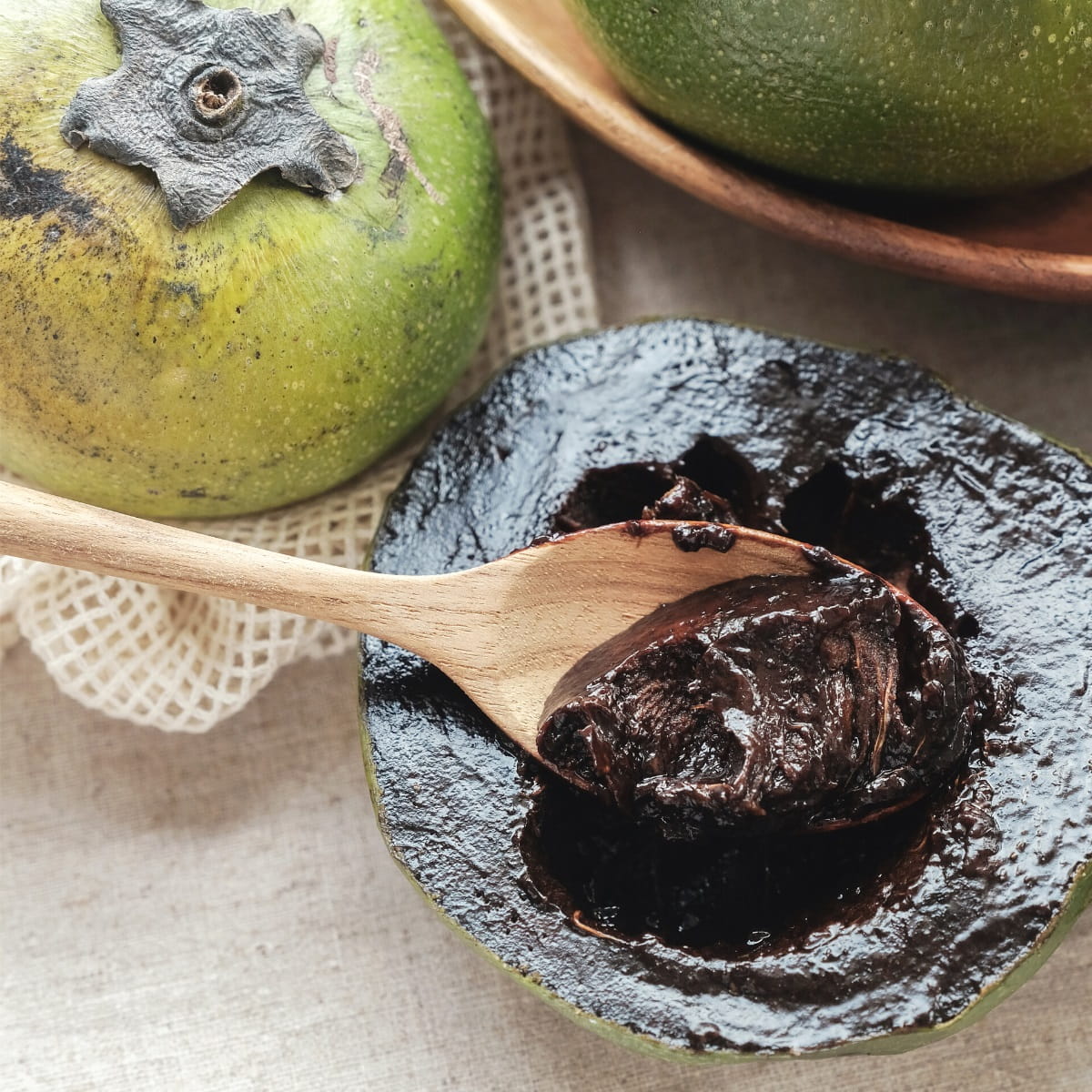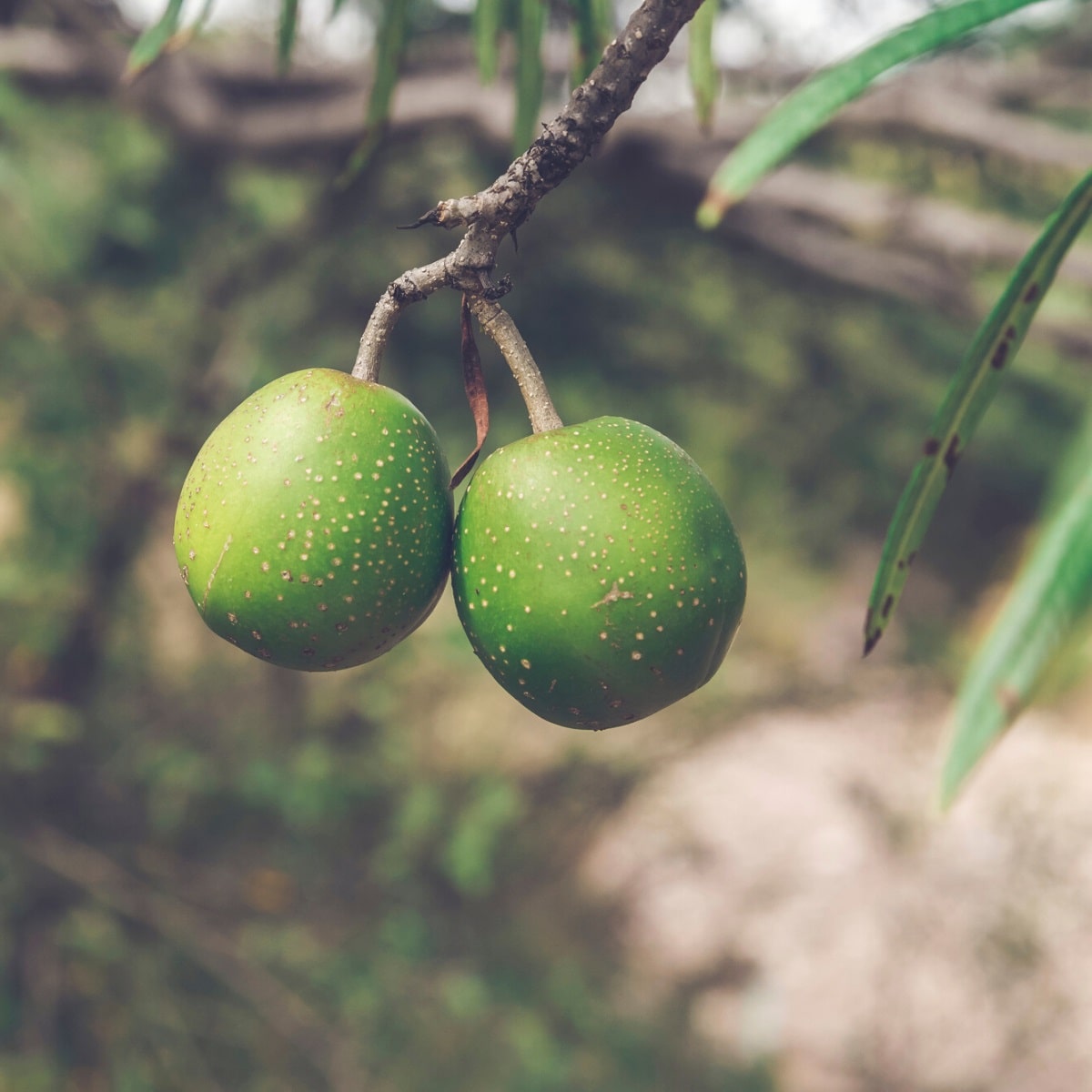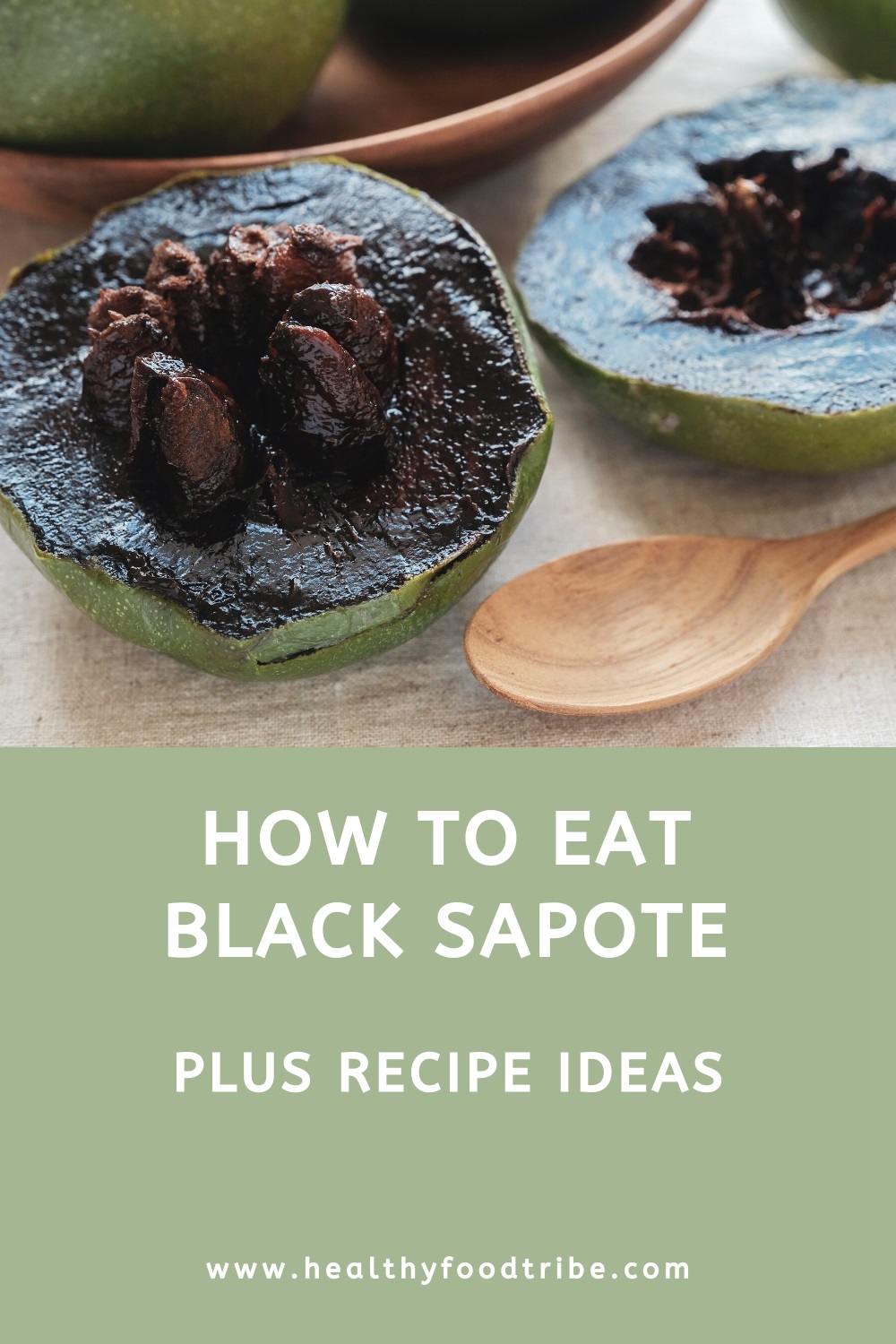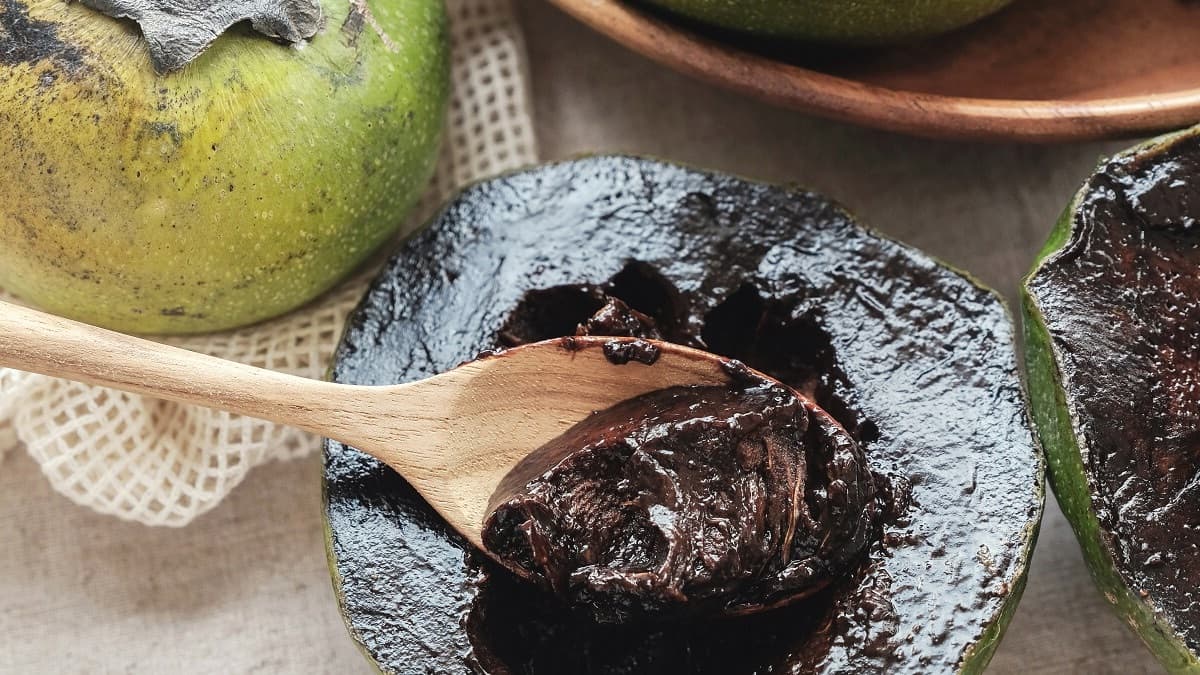Last updated: January 14, 2024
What is black sapote, and how should we cut, prepare, and eat it? This guide explains everything you need to know about this unique fruit!
Black sapote is a strange little fruit that requires a lot of patience and great timing to enjoy. If you cut into one too early, you’ll be sadly disappointed (and a little puckered). But if you wait for these tropical delicacies to ripen, you won’t be disappointed.
In this article, I’ll show you how to cut and eat black sapote to get the most out of its unique taste. More importantly, I will show you how to tell when these fruits are ripe and share some of the best recipe ideas to enjoy them in.
Quick navigation:
What Is Black Sapote?
Before I explain how best to prepare and eat a black sapote fruit, let’s first take a closer look at what this fruit actually is and where it comes from.
Origin
The black sapote is a unique species of persimmon native to Mexico, Central America, Colombia, and the Caribbean.
While it shares its name with white sapote and mamey sapote, it is not related to either. What these three fruits do have in common though is soft, delicate flesh.
Flesh
Black sapotes start off with bright green skin and greenish-white flesh. They are typically perfectly round with a ring of leaf-like growths on the stem end. Some varieties are more oblong, like a fat Roma tomato.

As sapotes mature, this flesh begins to darken to brown and eventually black. Ripe and ready-to-eat fruits look a little rotten, with brownish-green skin that is easily dented with pressure.
Taste
If you bite into a black sapote early, you’ll be greatly disappointed. The immature flesh has a bitter, astringent flavor that quickly sucks the moisture from your mouth. Nearly ripe fruits aren’t astringent, but the taste is neutral to nonexistent.
It is only the softest, blackest stage of the sapote fruit that has a taste worth sinking your teeth into. It is mildly sweet, caramelly, and smooth. Some cultivars tend toward a parsimony or melon flavor, while others have hints of cocoa.

In either case, don’t expect to be overwhelmed by the taste, and you may be wondering why these fruits are so sought after if the flavor peaks at “delicate and mild”.
Much of their popularity has to do with their consistency, especially when whipped up. Mashing and mixing the soft, papaya-textured flesh creates a smooth, shiny product similar to chocolate pudding.
Chocolate Pudding Fruit
Indeed, black sapote is often referred to as “chocolate pudding fruit”.
But don’t make the same mistake many do when they hear this nickname. It’s called this because of its consistency and color, not its flavor.
That said, if you add a little honey and cocoa powder to black sapote flesh, it tastes just like chocolate pudding!
Cutting and Eating Black Sapote Fruit
Before you can whip up black sapote for the ultimate dessert, you first need to crack this fruit open to access the flesh inside.
The thin skin of this fruit isn’t edible. Neither are the large brown seeds inside (though some varieties are seedless). Only the squishy black flesh can be enjoyed.
Steps to cut and eat black sapote fuit:
- Rinse the black sapote under running water to remove any dirt.
- Cut the black sapote in half around its equator with a sharp knife. You should be able to twist the halves apart easily if the fruit is ripe.
- Use a spoon or fork to remove the large seeds from each half (if seeds are present).
- Use a spoon to scoop out the soft, chocolate-colored flesh from each half, leaving the inedible skin behind.
- Eat it directly or place it in a bowl to mix with other ingredients or add to your favorite recipe.
Another option is to cut the top off the fruit, removing about 1/4 inch of flesh. Then simply use a spoon to scoop out the pulp.
Practical Tips and Recipe Ideas
Now that you know how to access the strange black flesh of the sapote, here are a few tips for using it and working with this exotic fruit.
Read my exotic fruits list for more of these unique tropical treats.
When is a Black Sapote Ripe
The biggest mistake people make with black sapote is cutting into it too early.
This fruit isn’t ready to enjoy until the skin has begun to brown and it is soft enough that pressing on it leaves a mark. I’m not joking when I say that a black sapote isn’t ripe until it starts to look a little rotten.
Inside, ripe flesh will be dark brownish-black and glisten a little. If it appears dry, you probably didn’t wait long enough. You can still eat it as long as the flesh isn’t green, but the flavor will be very muted.
Where to Find Black Sapote
These delicate fruits do not ship well, which means you are unlikely to find them outside the regions where the trees can grow.

They are native to the tropics and are a common sight in Mexico and the Caribbean. You can also find these trees in Florida and Hawaii.
Commercial fruits are typically picked before they become ripe, so they hold up better during transport. They will require a few days on the counter before they are ready to eat.
How to Store Black Sapote
Unripe black sapote should be placed on the counter in a warm spot to encourage them to ripen. Once they become very soft and dark, they need to be eaten quickly, or they will go bad.
Ripe sapote can be placed in the fridge to keep them at peak ripeness level for longer. Pureed sapote can be frozen for up to six months.
Black Sapote Uses
A perfectly ripe black sapote makes an excellent snack all by itself. But where these odd fruits really shine is when combined with other ingredients and eaten raw or baked.

You can whip sapote flesh with a long list of flavorings to create all sorts of tasty raw pudding desserts. Here are a few of my favorites:
- Vanilla and milk
- Cocoa and honey
- Orange juice
- Kaffir lime juice
- Chocolate and peanut butter powder
You can also use black sapote in place of other fruit purees in baked goods. It is excellent in place of bananas in banana bread. It can also be added to cake batter, mixed with pie fillings, or used in pastries.
For a simple application, try topping your oatmeal, yogurt, or ice cream with black sapote puree.

